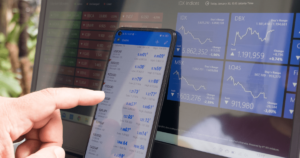When it comes to international economics, one of the fundamental concepts that plays a crucial role is the Balance of Payments (BOP). Whether you are a seasoned investor or just starting to explore the world of finance, having a clear understanding of BOP is essential to make informed decisions. In this blog post, we will delve into the intricacies of Balance of Payments, its components, and its significance in the global economy.
What is Balance of Payments?
The Balance of Payments refers to the systematic record of all economic transactions conducted between residents of a country and the rest of the world over a specific period of time. It provides a comprehensive overview of the inflows and outflows of money, goods, and services, as well as financial and non-financial assets, between a country and other nations.
Components of Balance of Payments
The Balance of Payments is divided into three main components:
- Current Account: This account tracks the flow of goods, services, and income between countries. It includes exports and imports of tangible goods (such as machinery, vehicles, and consumer products) and intangible services (such as tourism, transportation, and consulting).
- Capital Account: The capital account records the flow of financial assets and non-produced, non-financial assets between countries. It includes transactions such as foreign direct investment, portfolio investment, loans, and the acquisition or disposal of non-financial assets.
- Financial Account: This account covers changes in ownership of financial assets and liabilities between countries. It includes transactions related to foreign exchange reserves, portfolio investment, and other financial derivatives.
Significance of Balance of Payments
The Balance of Payments serves as a vital indicator of a country’s economic health and its interactions with the global economy. It provides valuable insights into various aspects, including:
- Trade Balance: The Balance of Payments reveals whether a country has a trade surplus (exports exceed imports) or a trade deficit (imports exceed exports). This information helps policymakers and investors assess the competitiveness of a nation’s industries and its reliance on foreign trade.
- Exchange Rates: BOP data influences exchange rates as it reflects the supply and demand dynamics of a country’s currency. A trade surplus can lead to currency appreciation, while a trade deficit can result in depreciation.
- Foreign Investment: Investors closely monitor BOP data to gauge the attractiveness of a country for foreign investment. A positive BOP indicates a favorable investment climate, while a negative BOP may raise concerns about the country’s financial stability.
- Policy Formulation: Governments utilize BOP information to formulate economic and monetary policies. It helps them identify areas that require intervention, such as implementing trade restrictions or encouraging export-oriented industries.
Conclusion
Understanding the Balance of Payments is essential for anyone involved in international trade, finance, or investment. It provides a comprehensive picture of a country’s economic transactions with the rest of the world and helps assess its financial health and global competitiveness. By analyzing BOP data, individuals and policymakers can make informed decisions and navigate the complexities of the global economy more effectively.
So, whether you are an economist, a business owner, or an investor, keeping a close eye on the Balance of Payments can help you stay ahead in the ever-changing world of international economics.








